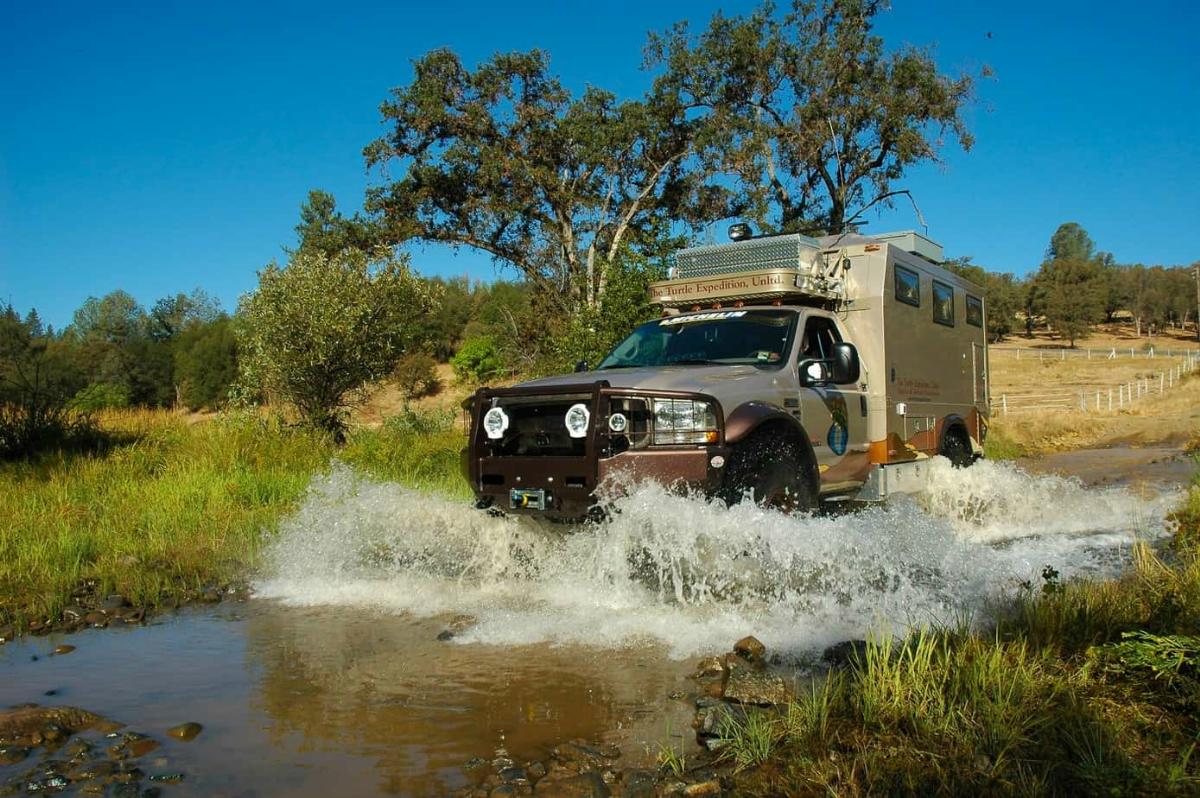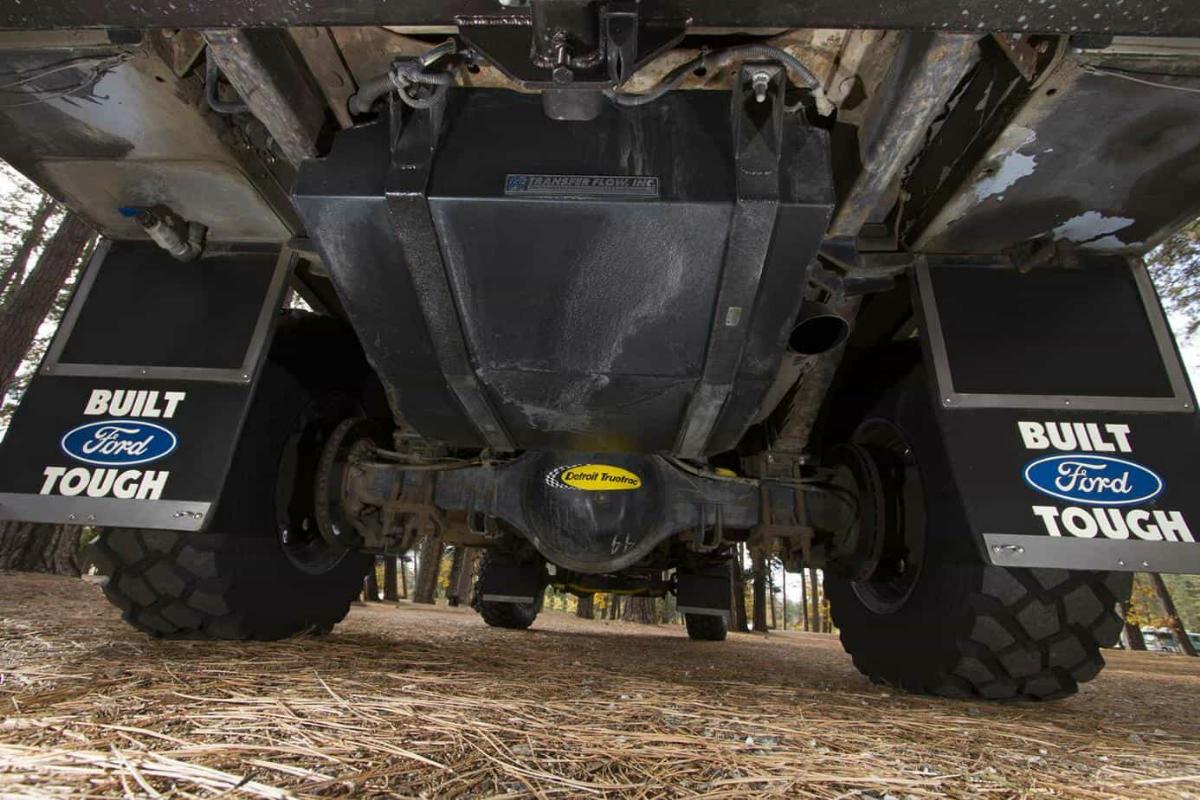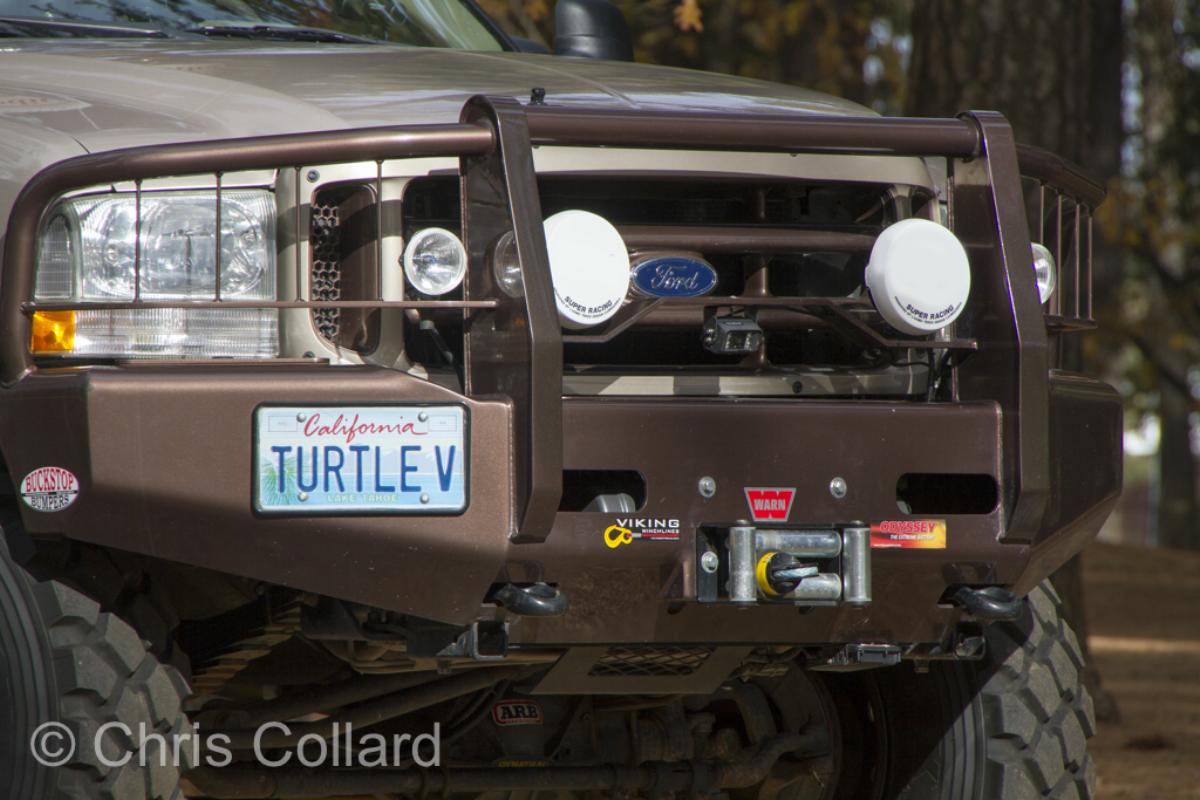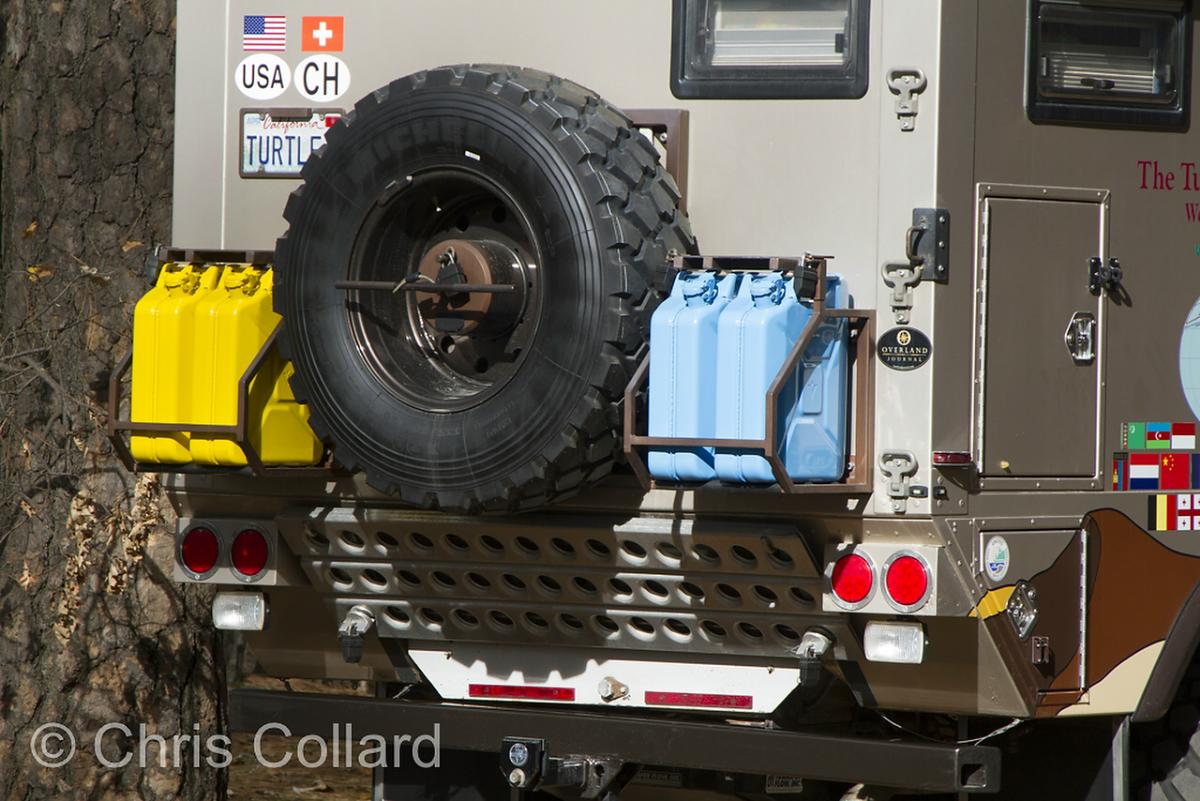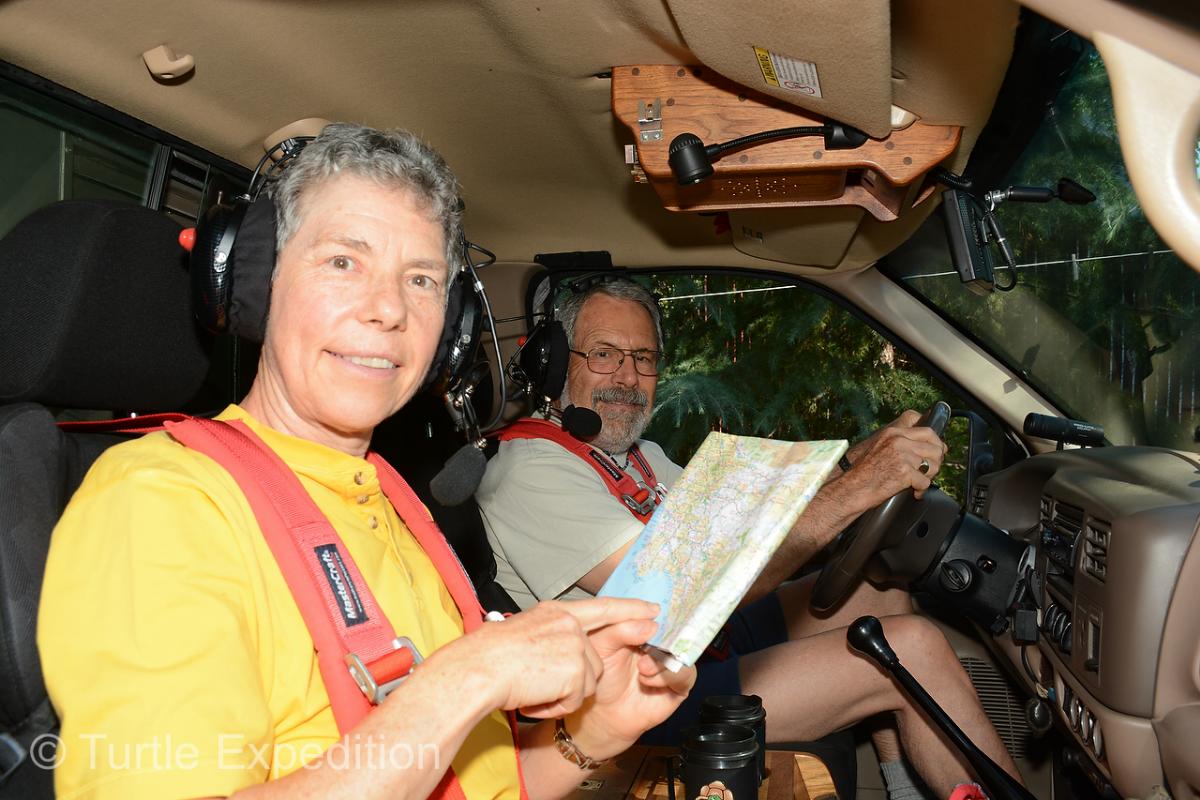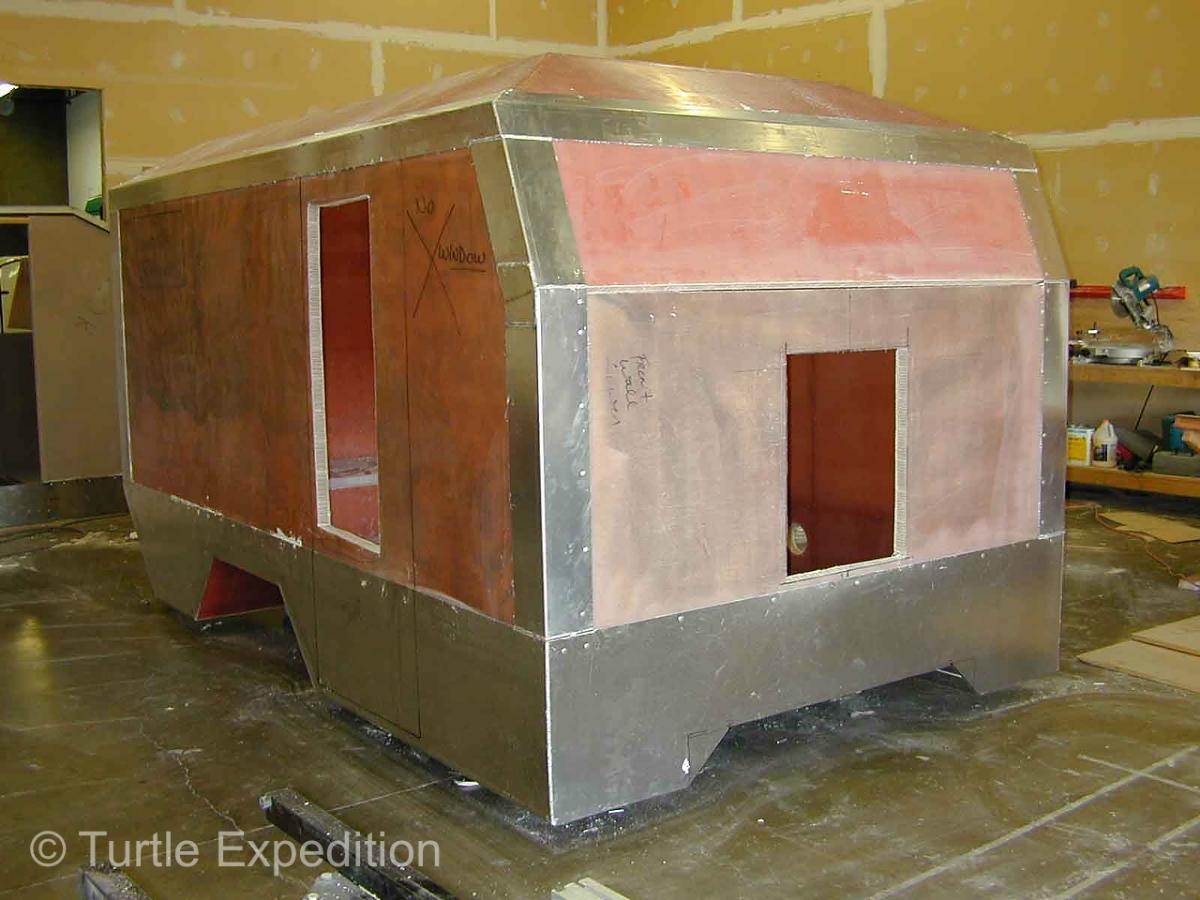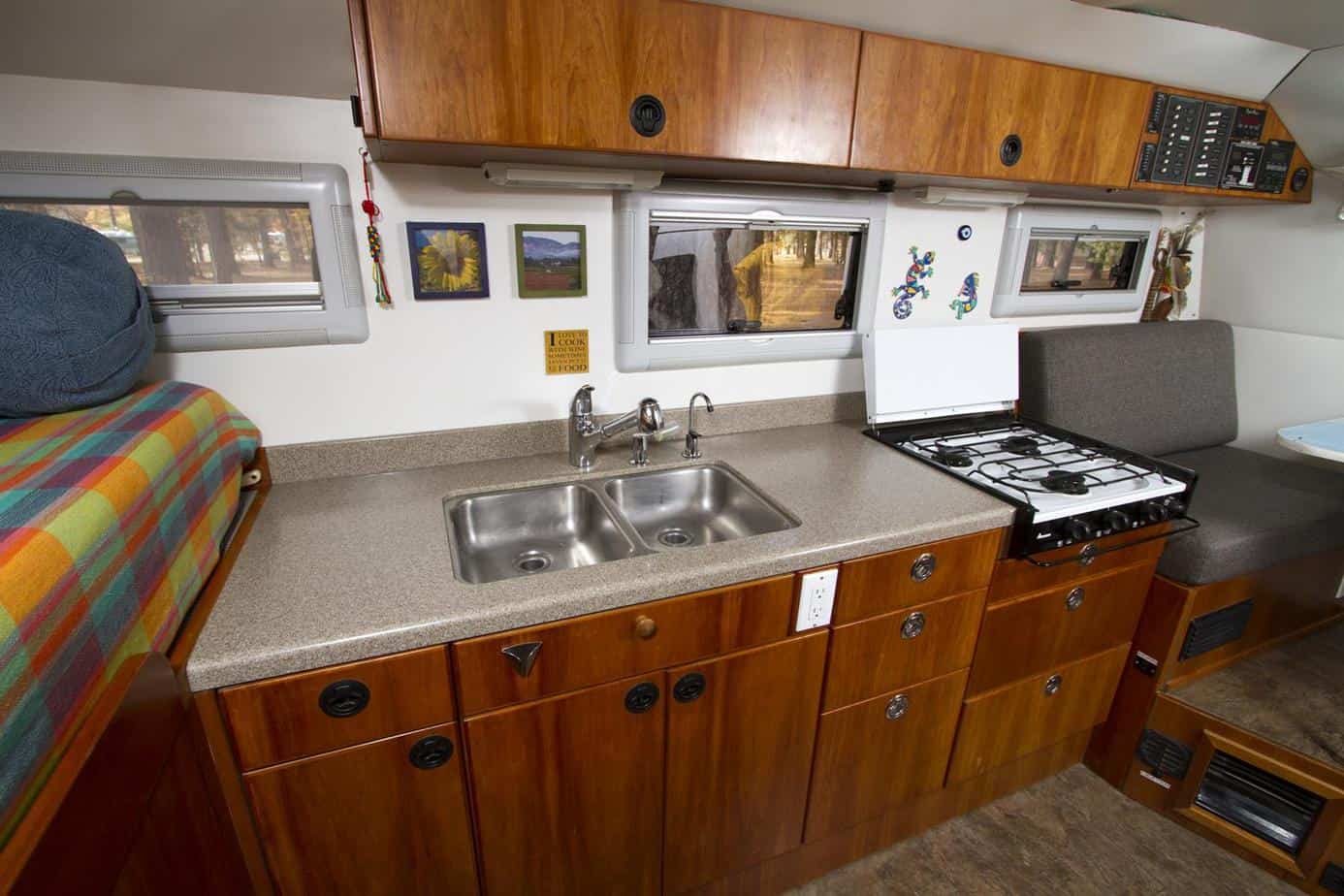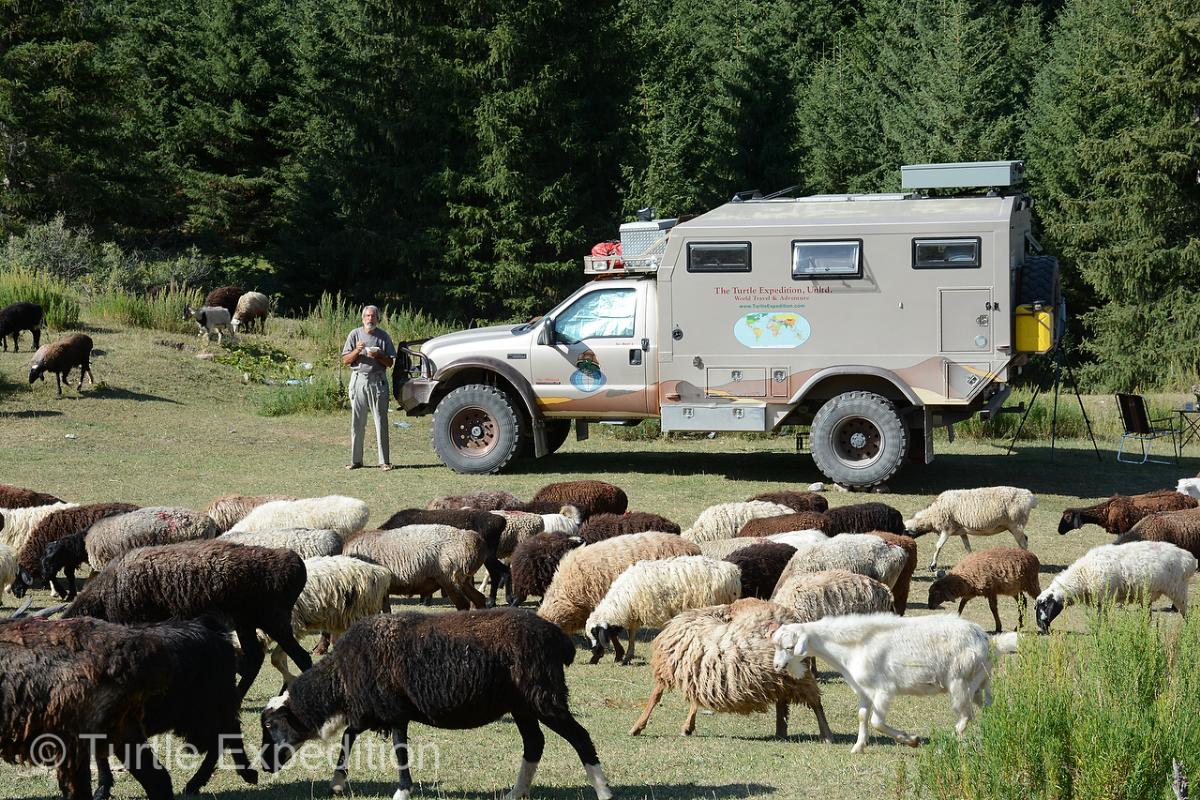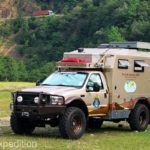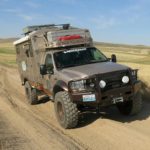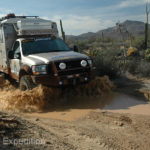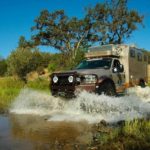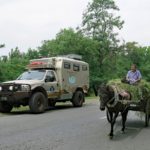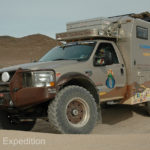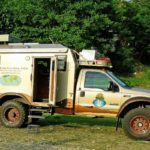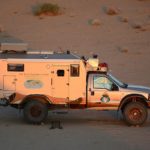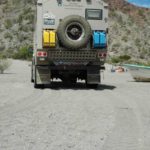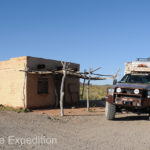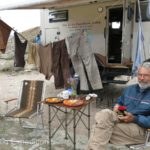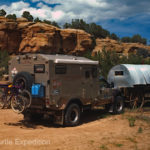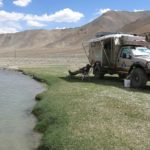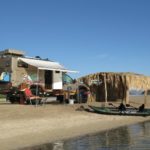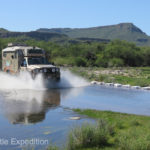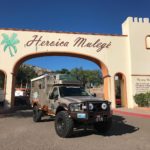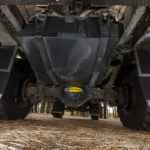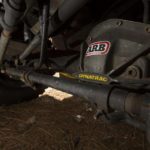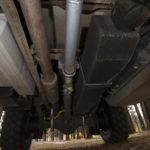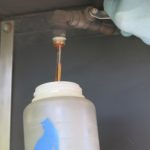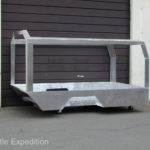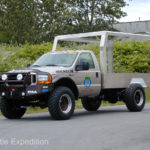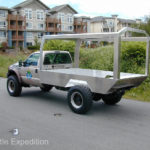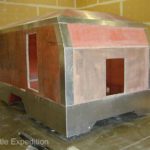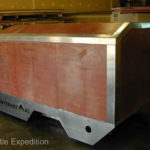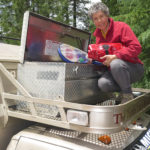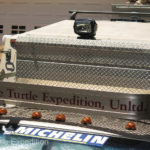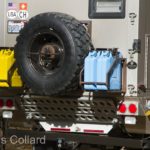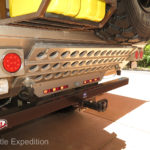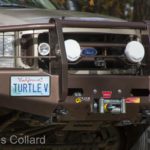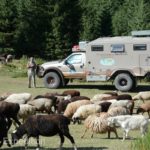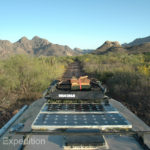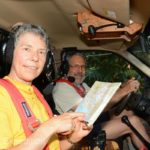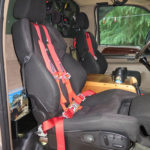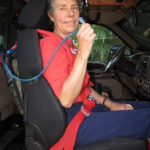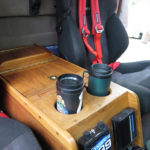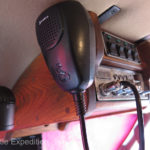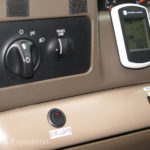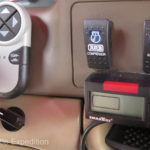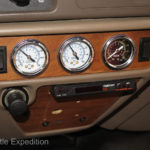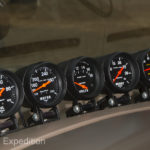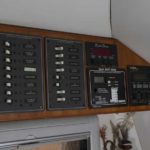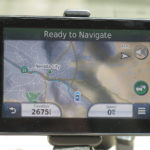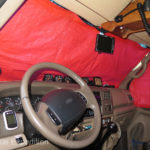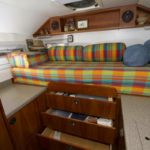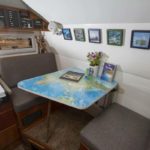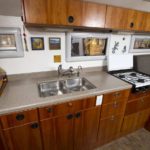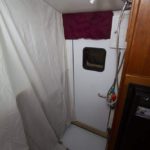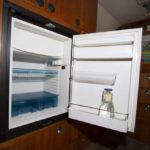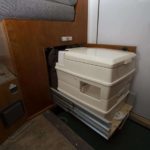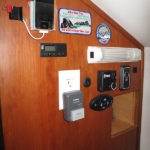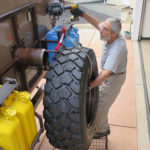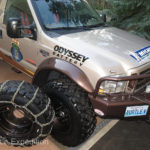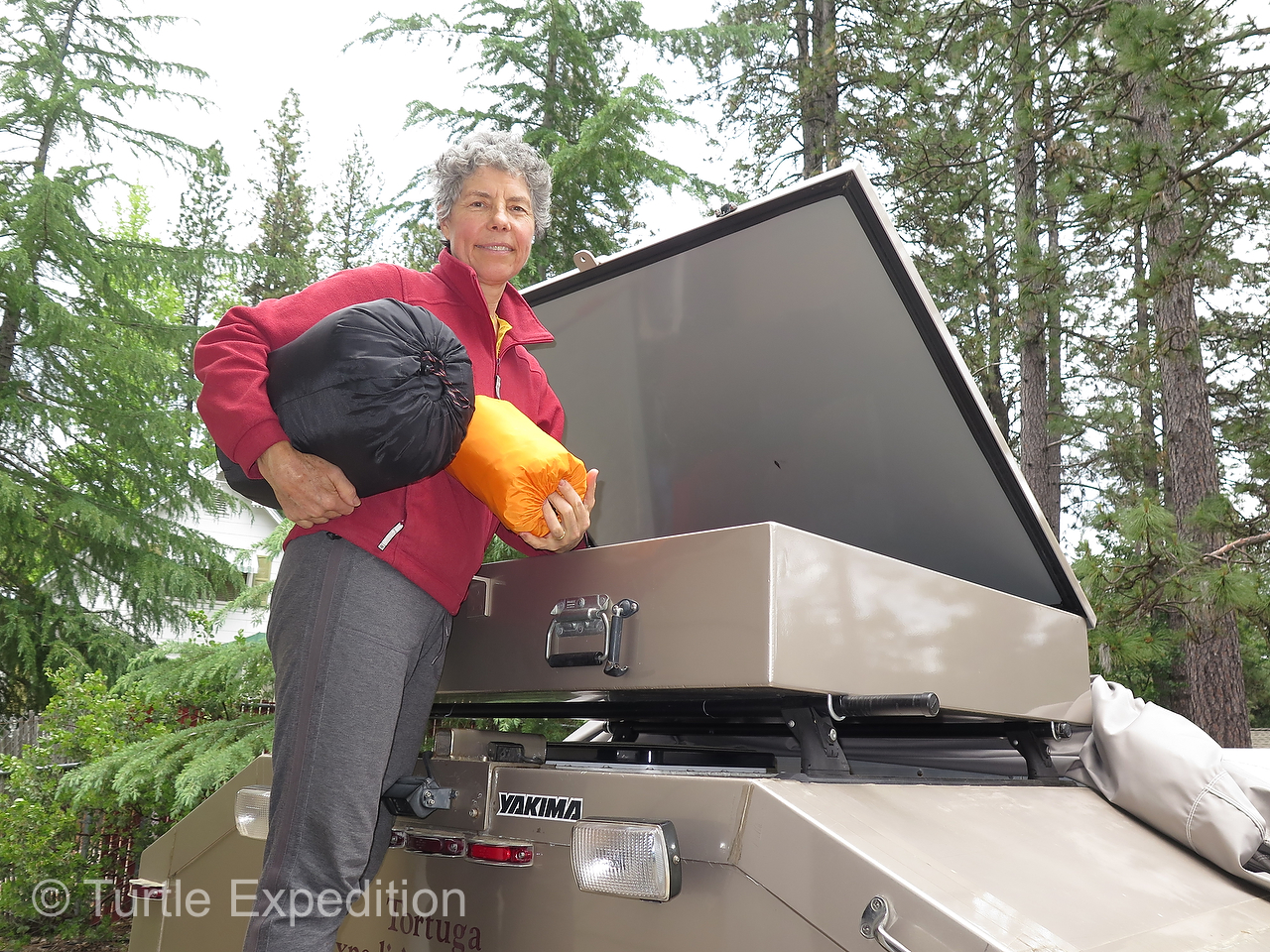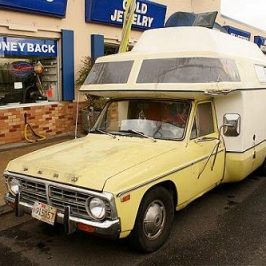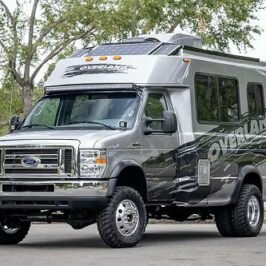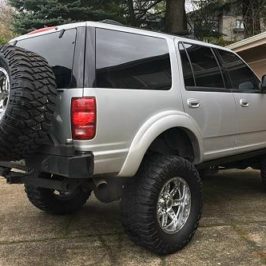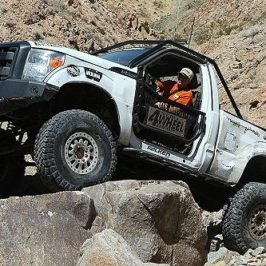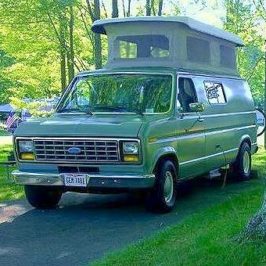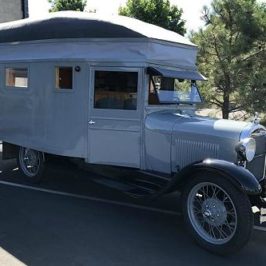Back in 1970, Gary and Monika Wescott began exploring the globe long before people in the United States had even heard of the word ‘overlanding’. For the past 39 years, these two intrepid adventurers and photojournalists have globetrotted from the arid deserts of Afghanistan to the deepest jungles of the Amazon, and across the frozen steppes of Siberia, with sometimes no more than a camera and a backpack. Their travel/adventure stories have been published in fifteen countries and ten languages around the World, including Off-Road, Four-Wheeler, Power Stroke Registry, Front Line, My Ford, Trailer Life, Truck Trend, Motorhome, Camping Life, and other U.S. magazines.
The Westcott’s have done most of their wandering in specially prepared Ford four-wheel drive trucks. Replacing four previous travel/research vehicles, The Turtle V and its European-style Tortuga Expedition Camper is the latest home on the road. Based on a Super Duty F-550, it is carefully outfitted with equipment of proven quality and reliability. “Through years of experience, we’ve systematically found out what works.” said Gary, “In the places we go, reliability becomes all-important! This is not a vacation.”
Suspension & Drivetrain
The F-550 was upgraded with heavier-duty National springs and Rancho RS9000XL adjustable shocks at each corner. Fore and aft Hellwig sway bars, along with rear Hellwig air assist bags control body roll and the additional weight of the onboard house. The OE dualies were exchanged for Michelin 335/80/R20 XZL MPT tires on custom 20×11 inch Rickson wheels. A Lee hydraulic ram assist keeps them rolling down the road in a straight line. Because the failure of a 41-inch tire can be disastrous, a SmarTire wireless pressure/temperature monitoring system was added. The final configuration has provided a functional and reliable suspension that is reasonably comfortable. The decision to maintain a stock-height suspension mandated trimming the fenders to eliminate rubbing. Bushwacker stepped in to assist and used the Turtle as a template to fabricate their first Super Duty cutout fender flares.
Dana 60 and 135S axles, which are fitted with an ARB Air Locker and Eaton Detroit Truetrac respectively, are kept contaminant free by K&N breathers and take no issue with the 550’s 17,500-pound GVWR. Dynatrac Free-Spin hubs were installed up front after two sets of the factory unit bearings failed.
Front Bumper
The front bumper is a custom design by Buckstop Truckware in Oregon, incorporating lockable storage compartments, two trailer hitch receivers, headlight protection bars and rock deflector in front of the steering cooler. Mounts for a Go Pro camera and a front Total Vision camera were added. A Warn 16.5 TI winch is discreetly mounted low and locked inside the bumper. PIAA LP570 LED white long-range driving lights and PIAA 510 Series Xtreme White SMR fog lights were strategically placed. Both can be controlled with manual JRV switches or by the dimmer switch. A Passport SR1 radar/laser sensor is neatly mounted out of harm’s way.
Rear Bumper
The rear bumper was custom-designed by Unique Metal Products. Like the front bumper, it incorporates 2” X 2” HD trailer hitch receivers on both sides and the middle. The socket in the middle holds a Yakima bike rack, a Class 3 trailer hitch or a Mac’s Trail D-Vice. The end sockets on each side fit a specially designed drawbar that can be used for a Hi-Lift jack or an auxiliary table for a Weber Go-Anywhere BBQ. The bumper itself serves as a compartment to store the main Hi-Lift jack bar, leaving the foot and lift mechanism stored clean and safely away.
Inside The Cab
Recaro Style Orthopedic seats incorporate seven adjustments, a heater and ventilation fan. Four-point Mastercraft Safety Harnesses hold the occupants securely and comfortably in place. A custom walnut center console contains maps, flashlights, auxiliary locks and all small travel accessories. It incorporates cup holders specifically sized for our Aladdin travel cups and a very hidden secret storage compartment for a complete spare set of keys and other items that even you couldn’t find. On the front, a 12-volt plug outlet powers Rugged Radios communication system and a small Statpower PRO Watt 125 inverter can charge phones and computers on the road.
A quick look at the dash, left to right, will show a switch for the side flood lights on the rack over the cab, a fuel tank selector switch, inside/outside temperature gauge, a hand controller for the roof-mounted GoLight, and the information screen for the SmarTire pressure/temp tire monitoring system, which keeps the driver informed of the pressure and temperature of each tire and warns them if there is any sudden pressure or temperature change. A switch engages the front differential ARB Locker, and next to it another switch turns on our dual ExtremeAire 12-volt compressors by Extreme Outback Products. These compressors feed an AccuAir 5-gallon aluminum reserve tank which serves to operate the twin Fiamm marine air horns, the front ARB Air Locker and to inflate the Hellwig Air Assist suspension bags. Air is also used to re-inflate tires, reseat beads if tire repairs are needed, and just a general use of high-pressure (120 psi) air for air tools.
In the center they upgraded to a Kenwood AM/FM radio with CD and flash stick ports. These power a factory premium 4-speaker sound system or can go via Bluetooth to the Rugged Radios intercom headsets. This communication system has greatly increased the safety and pleasure of overland travel, allowing them to speak in a normal voice and be heard every time. Two 12-volt auxiliary plugs are factory standard. Air pressure gauges show the condition of left and right Hellwig air bags and the pressure in the AccuAir 5-gallon aluminum reserve tank. Controls for the Passport SR1radar/laser detector were placed where the ashtray use to be.
At eye level there is an Auto Meter 14-psi oil pressure warning light, mechanical Auto Meter gauges for Volts, Water Temperature, Oil Pressure, Boost, Exhaust Gas Temperature and a Garmin GPS. Overhead is a custom walnut console that holds a Cobra CB radio, JRV map lights and control switches for fog, driving and four backup lights.
Where the rear-view mirror normally goes there is a 5-inch monitor that is fed by three Total Vision remote cameras, one on the front bumper, a second on the rear above the spare tire, and a third inside the camper. A switch allows them to toggle between the three cameras from the cab.
94-Gallons of Fuel
The factory fuel tank was replaced with a custom Transfer Flow tank with a 46-gallon capacity and an emergency drain plug. Transfer Flow also installed their 38-gallon auxiliary tank and designed a special switch-over valve so they can choose which tank to run from. Those two tanks along with the two 5-gallon jerry cans give them a total of 94-gallons of diesel, or an easy 1,000-mile range.
The Camper
After constructing a wood prototype an aluminum exoskeleton was fabricated and welded at all joints. Inside this exoskeleton, 1-1/2″ panels of honey-comb Nida-Core were hand laid with fiberglass and attached to the aluminum frame with marine Sikaflex adhesive, secured with marine pop rivets where needed. All cabinets and other accessories, both inside and out, were attached to the Nida-Core walls using Yardley brass nut-certs and 3M EPX 2-part epoxy.
The camper is mounted to the chassis of the F-550 using a three-point suspension system engineered by the experts at Midwest Four Wheel Drive in Missouri. There are two supporting pads at the front and a large pivot bolt at the rear. This completely isolates the camper from the twisting of the frame.
Basic living requirements were simple; sleep, cook, eat, work, bathe and go to the bathroom without opening the camper door, for a week if necessary. A comfortable bed, a comfortable place to sit, to eat and work, a functional kitchen with a three-burner propane stove to prepare healthy meals, two sinks with two faucets, one for purified water and one for filtered purified water, a compressor refrigerator, an inside and outside shower, a Porta-Potti, a good sound system and plenty of light where it is needed.
The roof houses racks for a canoe, kayaks, and a weather-proof locking aluminum storage box. Two BP 85 solar panels run through a Blue Sky Energy Solar Boost 3000i controller.
Two Fan-Tastic Vents provide air circulation in lieu of an air conditioner.
All windows are Seitz dual-pane with privacy and mosquito screens and were kept small enough so nobody can crawl through them.
An 8.8 ft. Fiamma 45 awning provides shade and shelter from the rain as well as a place to hang clothes to dry.
All running lights are Grote LED. Four powerful flood lights can be turned on manually or automatically when we shift into reverse. On the front of the camper box a large cab-over multi-use storage rack was designed. A Weather Guard locker fits perfectly with room for more jerry cans, a load of firewood or a Cascade Designs SeaLine bag for diving gear. It afforded a convenient place to bolt a pair of Fiamm stainless steel marine air horns. Loud horn is an international language. A remote-control GoLight has a good field of view from the Weather Guard lid.
Two side compartments on the front driver side contain a fuel fill port for our auxiliary Transfer Flow tank, a Racor fuel filter, and the Eberspaecher Hydronic coolant heater.
A series of valves and transfer tanks allow the hot coolant to be directed back to the engine and/or through a Kelvion Plate heat exchanger and/or to a small radiator heater inside the camper. It’s free heat when driving. The Watts Series MMV thermostatic Mixing valve cools the 160°F water from the Kelvion Plate heat exchanger down to a safe 120°F tap water in about three minutes.
A Warn quick disconnect in this compartment allows jumper cables to be connected to the four Odyssey camper batteries.
Below that is a compartment for dual ExtemeAire Magnum 12-Volt compressors by Extreme Outback Products and storage boxes for air hoses, electrical cables and adapters.
At the far rear, the propane compartment was sized to fit two Manchester 20-lb tanks with a secure hold-down and a dual-tank switch-over regulator leaving room for pre-measured repair and equipment boxes and the outside shower system.
The big compartment behind the Darr military sand ladders holds long equipment like an awning crank, wash brush, and fishing poles, chains, recovery gear and spare parts. It is also accessible from both sides of the camper. On the driver side, the fill tube of our main Transfer Flow tank is located while the passenger side is filled with leveling blocks, a shovel, a saw and two bottle jacks, etc.
The upper door on the passenger side rear holds every-day camping gear like ZipDee chairs, the Weber Go-Anywhere BBQ, a foldable Coleman stand, table tops, a Ready Welder 12V welding system, the portable toilet seat, etc. It is the only door that opens towards the rear because it makes access in camp more convenient.
Racks on the rear hold and lock two Nato-style water and two fuel cans by Midwest Can Co. and the spare tire in the center. The 198-pound tire and wheel are easily removed using a draw bar that fits into a receiver socket on the roof. A 500-lb capacity Warn Drill Winch lowers the tire to the ground. The Total Vision rear view camera is located below the receiver socket.
On the right rear corner of the camper (behind the wheel well) is a 14-gallon oil reservoir that is filled from the inside and has a spout on the outside when they need a quart of oil. Quality oil, like the Amsoil 15/30 Heavy Duty Diesel Oil cannot be found in some of the countries they travel through.
These decals represent 40,000 miles through 26 countries following the Silk Road.
Conclusion
Before the days of the internet and social media, I read about the Wescott’s adventures in the pages of magazines. I chose to feature their Big Turtle V Ford F-550 to honor and preserve their legacy. Especially as companies begin using the ‘Turtle’ name on their adventure vehicles, and more and more people become overlanders and influencers. I would encourage you to visit the TurtleExpedition.com website and check out their adventures and other vehicles.
Specifications
Vehicle: 1999 Ford F-550
Engine: Navistar 7.3L Power Stroke turbo-diesel, ATS Aurora 3000 turbo
Output: 305 hp @ 3,200 rpm, 550 lb-ft @ 2,000 rpm
Transmission: 6-speed manual
Transfer Case: OE 2-speed
Axles: Dana 60, Dana 135S
Differentials: ARB Air Locker, Eaton Detroit Truetrac
Tires/wheels: Michelin 335/80/R20 XZL MPT, 20 x 11 Rickson
Suspension: National springs, Rancho RS9000XL shocks
Steering: Lee hydraulic assist
Bumper: Buckstop custom
Recovery: Warn 16,500-lb winch, Viking synthetic rope, Hi-Lift
Fuel cell/gallon/range: Transfer Flow, 75 gallon, 1,000 range
Compressor: Extreme Outback Extreme Air
Batteries: Odyssey Extreme (6)
Lighting: PIAA, Grote SuperNova
Link / Resource
More Photos
Click the photos to enlarge.
- Dinosaur/Yampa UT

